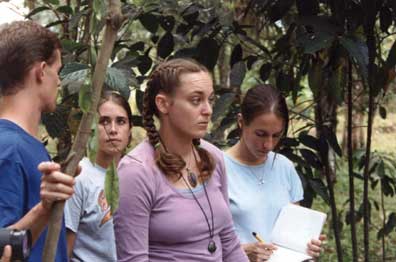
A chronology of the Peace Corps 1961-2003
A chronology of the Peace Corps 1961-2003
Dayton Daily News
March 1, 1961: President John F. Kennedy signs executive order establishing the Peace Corps under Director Sargent Shriver. Five months later, the inaugural group of volunteers prepare to leave for the African countries of Ghana and Tanzania.
April 22, 1962: The Peace Corps suffers its first casualties when volunteers Lawrence Radley and David Crozier die in a plane crash in Colombia.
December 1963: Tin miners staging a strike in Bolivia hold volunteer Robert Fererstrom and three other Americans hostage for 10 days. About 7,300 volunteers are now serving in 44 countries.
June 1966: The Peace Corps reaches 15,000 volunteers, the largest number in its history. Meanwhile, the death toll begins to rise, from 10 between 1961-64 to 25 from 1965-66; five volunteers die in a single month.
Aug. 1, 1966: Volunteer Thomas Ashton is gunned down by Texas sniper Charles Whitman as he walks across the University of Texas campus during training session.
December 1969: Ohio native and first man on the moon Neil Armstrong is named by President Nixon to be chairman of the Peace Corps National Advisory Council.
July 1971: President Nixon folds the Peace Corps and several other federal volunteer programs into a new federal volunteer agency called ACTION.
December 1974: Budget cuts hit the agency, reducing the volunteer force, but the Peace Corps has posts in a record 69 countries.
1979: President Jimmy Carter signs an executive order giving the Peace Corps full autonomy.
June 2, 1981: The Peace Corps celebrates its 20th anniversary, honoring the 98,000 volunteers who had served in 88 countries.
1982: Funding cuts slash the number of volunteers to 5,380, the lowest number since 1962.
Sept. 8, 1988: Minster, Ohio native Matthew Sherman, 22, is shot to death outside the El Rincon Peace Corps training center in Honduras by security guards who mistake him for an intruder. Sherman becomes the 201st Peace Corps volunteer to die in service.
Dec. 21, 1988: Volunteer Steven Butler is among the 271 people who die when a bomb rips apart Pan Am flight 103 over Lockerbie, Scotland. A second volunteer, Margaret Schutzius, dies nine months later when terrorist bomb blows up a jetliner over the Niger desert.
January 1990: The Peace Corps, for the first time, begins compiling statistics on assaults, rapes and other violent crimes involving volunteers.
July 22, 1992: The first group of Peace Corps volunteers to serve in the former Soviet Union leave for Estonia, Latvia and Lithuania.
Feb. 13. 1997: Thirty-one Peace Corps volunteers leave the U.S. and become the first group ever to serve in South Africa.
Dec. 17, 1998: Peace Corps volunteer Karen Phillips becomes the agency's fourth murder victim in 1998 when she is stabbed to death while walking near her home in Oyem, Gabon.. In 1999, the number of recorded assaults on Peace Corps volunteers climbs to 326, more than three times the number reported in 1990.
February 2001: Volunteer Walter Poirier is reported missing in Bolivia, triggering investigations raising questions about the security of Peace Corps volunteers overseas. The U.S. General Accounting Office later finds that the Peace Corps "lost track" of Poirier.
May 2001: To celebrate the Peace Corps' 40th anniversary, Ohio Gov. Bob Taft, who taught school as a volunteer in Tanzania from 1963-65, joins a procession of volunteers at Ohio State University.
February 2002: Former volunteer and U.S. representative from Dayton Tony Hall, who served in Thailand in 1966-67, is named U.S. ambassador to the United Nations Agencies for Food and Agriculture.
July 23, 2003: After the U.S. House approves a foreign aid bill that cuts the administration's requested Peace Corps budget from $359 million to $314 million, President Bush warns that the administration may not be able to meet its goal of doubling the number of volunteers to 14,000 by 2007.
[From the Dayton Daily News: 10.24.2003]
